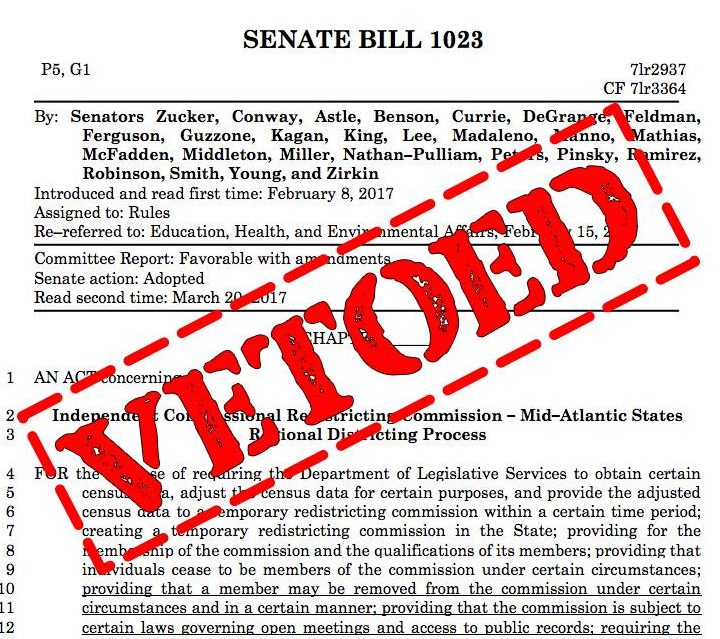By Brooke Auxier
Capital News Service
 Maryland lags behind other states in making government information easy for citizens to access online, open government advocates said, despite Gov. Martin O’Malley’s push to make Maryland more digitally transparent.
Maryland lags behind other states in making government information easy for citizens to access online, open government advocates said, despite Gov. Martin O’Malley’s push to make Maryland more digitally transparent.
Open government advocates said O’Malley’s administration has not done a good enough job making raw data held by state agencies available to citizens who want to evaluate the performance of state government — and O’Malley’s administration — on their own.
“What’s happening in the government should be public,” said David Moore, executive director of the Participatory Politics Foundation, an open government advocacy group. “Transparency in the process increases trust among the wider percentage of citizens and when civic trust is built up, then there’s more engagement.”
The Center for Digital Government, a research institute focused on information technology policies and best practices for state and local governments on the Web, evaluates state websites using factors like innovation, citizen engagement and openness.
Their latest Digital States Survey, conducted in 2010, gave Maryland a B on an A-to-C-minus scale. Maryland’s neighbors — Pennsylvania and Virginia — received top marks, along with Utah and Michigan.
Always room for improvement
“There is absolutely always room for improvement,” said Teri Greene, director of Web systems for Maryland’s Department of Information Technology, an agency established in 2008.
Within the next six months, the department plans to make Maryland.gov mobile-friendly, introduce more multimedia content, make the site more accessible to individuals with disabilities and implement a geographic location feature that tailors content to the user’s local community.
They also hope to improve the search function on the site.
“It’s been a while since we updated the navigation. We want to make it really easy for people to get to what we know are the most used links,” Greene said.
Greene and other Maryland administrators said they’ve made it a priority to reach more citizens using social networks like Facebook and Twitter.
“One thing we’ve recognized with the dynamic growth of the web is the demand for content in social media channels, and for the use of video and multimedia content, rather than static narrative text,” Greene said. “We certainly want to engage citizens to make sure that the information gets out there. And certain communities of people, (social media) is what they prefer.”
Maryland’s government agencies can decide independently to communicate using social media platforms. Of the 114 state government agencies, 59% use Twitter, 43 percent use Facebook and 15% have video content embedded on their site or on a YouTube channel, according to Maryland.gov.
“We’ve developed a very vibrant and robust social media aspect to our site,” said Raquel Guillory, the governor’s communications director.
But advocates for open government like Moore said that improving the state’s social media presence shouldn’t be the most pressing issue.
Data not open or easily found
He and others want easy access to data from government agencies. And on Maryland websites, “data is not open or easily found,” Moore said.
“A lot of governments say they have open government because they have a Facebook page and they’re on Twitter — and we reject that. Those services are fine and they are popular and we use them, too. But fundamentally, states have to make a commitment to opening their data fully and that’s got to be the first step,” he said.
Jack Murphy, executive director of the Maryland-Delaware-D.C. Press Association said that Maryland.gov isn’t well organized, isn’t written in plain language, and doesn’t feature any frequently accessed databases.
“There’s a lot there, but I am not sure it’s organized in the best possible way,” Murphy said.
Open government advocates said the state needs a central repository for data from state agencies similar to the federal website Data.gov. President Obama’s administration created the site as part of an effort to make government more transparent.
In Maryland, administrators point to StateStat.Maryland.gov as an example of how O’Malley’s administration has put data online. The website displays charts and graphs that show how well the state is meeting 15 goals outlined by O’Malley.
“We’ve invested a lot of effort to make sure citizens have a lot of access and can see exactly how far we’ve progressed in meeting our 15 strategic policy goals,” Guillory said.
Raw government data does exist on various agency websites, however, but it is not easily found, open government advocates said.
“We don’t have just a central place with a list of all of the data sets that Maryland offers,” said Greene. “We’re looking to have something within the next year and hoping to find ways to aggregate that kind of information.”





Keep at it. This article addresses mostly the public function, but the internal management and reporting system of the State of Maryland is way behind and it looks very much as if it is on purpose. Not too long ago the government asked for a multi million dollar subsidy to change their reporting systems. The savings in time and staff efficiency are more than sufficient to pay for major improvement. The budget should be reduced with those “gains”. In addition it will provide a much more open and efficient government, that also can provide much more efficient and timely services.
That will require hiring competent people and laying off redundant bureaucrats. This will never happen. They are democratic votes!!!!